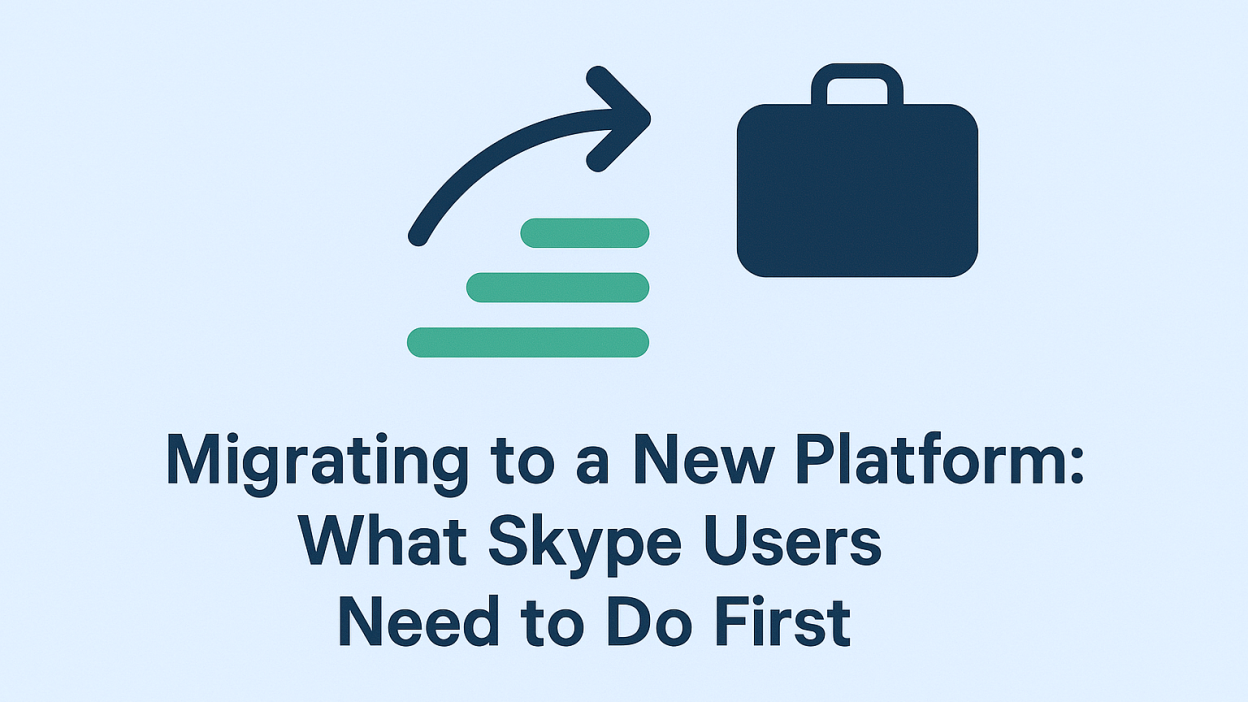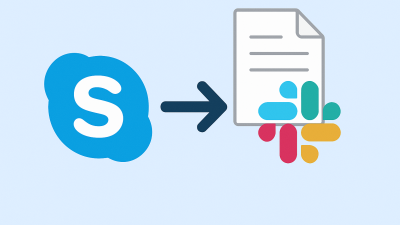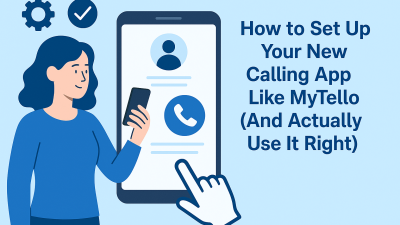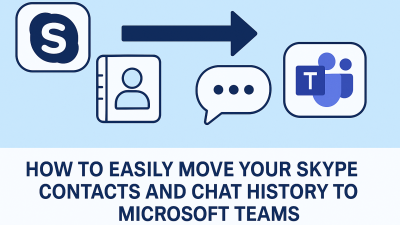If you’ve used Skype for years, it probably doesn’t feel like “just another app.” Maybe it’s how you called home after moving abroad. Maybe it was your bridge to clients, coworkers, or your long-distance partner. Now, with Skype set to retire in May 2025, that bridge is shifting.
It’s not just about switching tools — it’s about not losing connection. Not losing momentum. Not losing memories.
Right now, the most important thing to understand is this: you do have options, but you need to act soon. If you wait too long, you might find yourself locked out of past chats, missing contacts, or struggling to reconnect with people who mattered in your daily communication flow.
This isn’t a time to panic — it’s a time to move smart. One step at a time.
Step One: Protect What You’ve Built on Skype
Every message thread, every file sent, every name in your contact list, it adds up. Years of communication live inside that app, and it won’t follow you automatically unless you take a few specific actions.
The very first thing you should do is back up your data. Not next week. Not later. Now.
Microsoft does offer a way to download your Skype chat history, media, and call records. You’ll need to request this through their export tool, then wait for an email that gives you access to a downloadable archive. It comes in a zip file and might take a few hours to be ready.
If you’re someone who used Skype for business calls, exporting those logs might help down the line, especially if you need proof of discussions or decisions. If it was personal, there may be years’ worth of messages you didn’t even realize you’d miss until they’re gone.
Once Skype shuts down, that door closes. So before you think about where to go next, take care of what you’ve already built.
Understand Your Communication Style Before Choosing a Platform
People rush to download new apps when something they know disappears. It’s natural. But this move from Skype shouldn’t be just about choosing the most popular replacement — it should be about choosing the right one for you.
The way you used Skype should shape your next step.
If most of your time on Skype was spent making international calls, then you don’t need a bloated platform full of business tools. You need something focused on voice quality, stability, and low rates. That’s where platforms like MyTello really shine, they do one thing and do it well: keep global calls simple and cheap.
On the other hand, if you relied on Skype to chat with teammates, hold meetings, share screens, or collaborate in groups, you might find Microsoft Teams to be a natural fit. It’s structured, reliable, and integrates directly with Microsoft accounts, which most Skype users already have.
Some people used Skype to keep in touch with family on their mobiles. If that sounds like you, maybe what you really want is something like WhatsApp, Signal, or even Telegram. They’re fast, lightweight, and don’t require much setup.
The goal isn’t to copy Skype exactly. It’s to find a new space where your old communication habits feel comfortable again, or even better.
Exploring the Best Skype Alternatives — For Real Life, Not Just Features

Microsoft Teams will be the default suggestion for most users, but it’s not the only option. Depending on your needs, the landscape looks different.
If your priority is:
-
Calling overseas easily — MyTello stands out as a focused replacement, especially for those who called landlines or mobile numbers directly through Skype.
-
Team collaboration and structured communication — Microsoft Teams offers chat, video, file sharing, and integrates with tools like Outlook and OneDrive.
-
Simple messaging across devices — WhatsApp or Signal can replace basic 1:1 chats, especially for families.
-
Community or hobby groups — Discord offers relaxed voice channels and threads, great for small businesses or digital communities.
Each of these platforms comes with its own strengths, but you don’t need to overcomplicate it. Pick what aligns most closely with how you actually used Skype, not just what’s trending.
And if you’re still unsure, test two platforms side-by-side. Invite a friend to each and see which one feels more natural. Trust how it feels to use, not just the specs on the website.
Getting Started on Your New Platform (Without Starting Over)
You don’t need to rebuild your whole contact list from memory. Most platforms today make it simple to get set up — whether you’re using a Microsoft account, a mobile number, or an email.
If you’re heading to Microsoft Teams:
-
Use your Skype login. This will carry over your contacts and recent chats automatically in many cases.
-
Don’t create a brand new account unless you want a fresh start. Sticking to your Skype-linked credentials helps Teams recognize your data.
If you’re moving to another app:
-
Follow their new user flow — most ask for a phone number or email.
-
Some apps will scan your address book (with permission) and show you who’s already there.
-
Take a few minutes to customize your profile and notification settings so it feels like yours.
The setup is simple. The harder part is usually emotional, letting go of a familiar tool and trying something new. But once you get that first “Hello” message from someone you’ve talked to on Skype for years? It starts to feel right again.
Now That You’ve Chosen a New Platform, Let People Know Where to Find You
Choosing a replacement for Skype is a big step, but it won’t mean much if the people you care about don’t know where to reach you.
This is one of those overlooked steps that causes the most confusion after migration. Contacts wonder why you’ve gone quiet. Clients assume you’ve disappeared. Family thinks something’s wrong. In reality, you’re just figuring things out.
The fix is simple: reach out directly.
You don’t need to make a grand announcement. Just start with the people you talk to the most. Drop them a message while you still have access to Skype, and let them know:
-
Where they can reach you next
-
If there’s a new username or phone number involved
-
Whether the new platform supports voice or video calls like Skype did
This small step rebuilds the human connection that gets lost in technical upgrades. It’s not just about features, it’s about relationships. And relationships rely on clarity, not assumption.
Don’t Wait — Test the New Setup with Someone You Trust
Moving to a new communication tool is a bit like moving into a new apartment. It might look clean and shiny, but you won’t know where the quirks are until you actually live in it.
Before depending on your new platform for anything important — like a client call, a birthday video chat, or a team check-in, take it for a spin. Try it with someone who won’t judge if you press the wrong button or fumble through the interface.
Make a voice call. Try a video chat. Send a few files or emojis. Ask them how the sound quality is. Notice if anything feels awkward or unfamiliar.
These small tests build confidence. They help you iron out settings, adjust your camera or mic, or fix permissions before they turn into problems.
The goal isn’t perfection. It’s comfort.
What About the People Who Don’t Want to Switch?
It’s going to happen. Some people will cling to Skype until the last possible day. Others might not want to install anything new. A few may not be comfortable with apps like Teams, Slack, or Discord — especially if they’re older or less tech-savvy.
This can feel frustrating, especially if you’ve taken the time to migrate and organize your contacts.
But it’s worth remembering: switching platforms isn’t just about your own convenience, it’s also about helping others make the leap.
If someone isn’t sure what to do next, offer to walk them through it. Share the link to the download page. Let them know why you’re switching. Show them how it actually works once you’re both in the new space.
And if they still prefer something different, like calling you on a number instead of chatting in an app, be flexible. Apps like MyTello can help fill that gap for international calling, without needing both sides to be online at the same time.
You can’t control what everyone else does. But you can make the transition easier for the people who matter most.
What to Do with Contacts That Don’t Migrate Automatically

Even if you’ve done everything right, used the right login, and followed every prompt, some contacts just won’t show up in your new app.
That’s not your fault. Platforms handle data differently. Skype stores some contacts locally. Some people created accounts without linking them to Microsoft. Others haven’t been active in years.
So what do you do?
First, think about the people you talked to regularly. If they’re important, reach out now and ask for updated contact info. Even if you haven’t spoken in a while, most people appreciate the chance to reconnect — especially if the conversation starts with something simple like:
“Hey, Skype is shutting down soon. Are you moving to another app? I’d love to stay in touch.”
You don’t need to rebuild your entire address book. Just focus on keeping your core circle intact.
Over time, your new platform will become your new normal. You’ll add people gradually, the same way you did with Skype years ago.
Recreating Your Routine (So It Doesn’t Feel Like Starting Over)
Skype wasn’t just an app. For a lot of people, it was part of their routine.
Maybe it was weekly calls to your parents abroad. Maybe it was the way you checked in with clients at the end of the day. Maybe it was your group’s monthly planning meeting.
Changing platforms doesn’t mean losing those rituals — it just means giving them a new home.
Pick a day to re-establish your rhythm. Schedule a test call. Send a “just checking in” message. Let people know you’re available on your new platform at the usual times.
By re-creating the structure you had with Skype, you reduce friction. You don’t need to reinvent how you stay in touch you just need to rebuild the bridge.
This also gives your contacts a gentle nudge to adapt along with you.
Avoiding the Most Common Migration Mistakes
Here are some of the biggest issues users run into when switching away from Skype — not as a checklist, but as gentle guidance.
Mistake 1: Creating a new Microsoft account for Teams instead of using your Skype login
This breaks the automatic sync. Stick with your existing credentials to carry over contacts and recent chats.
Mistake 2: Not exporting important chats or files before they disappear
Even if you think you won’t need them, it’s better to have a backup than regret losing something later.
Mistake 3: Waiting until the shutdown date to make a move
By then, the rush will make everything harder. Switching early gives you time to settle in.
Mistake 4: Choosing a platform based on hype, not fit
The right app for your friend might not be the right one for you. Choose based on how you actually communicate.
Migration doesn’t have to be stressful, it just has to be intentional.
You’re Not Behind — You’re Ahead of the Change
Skype’s retirement isn’t the end of communication. It’s a shift, one that opens up better, more stable, and more flexible tools if you’re willing to embrace them.
By backing up your data, choosing the platform that fits your voice and style, and reconnecting with people who matter, you’re doing more than just moving accounts. You’re making sure your conversations, relationships, and habits keep going strong, without interruption.
Whether your future communication happens inside Microsoft Teams, WhatsApp, MyTello, or something else entirely, what matters most is that you’ve taken action. You’ve protected your data. You’ve given yourself options. You’ve kept your connections alive.
That’s not just a successful migration. That’s a smart one.




